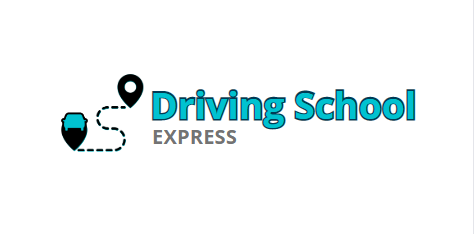The first step to driving is getting familiar with your vehicle.
While almost everyone knows the basic parts of a car, you need to understand EVERY part as a driver.
So even though you may already know these 16 external car parts, let’s go over them once more.
Because when you’re behind the wheel, you must know all of them!
Windshield
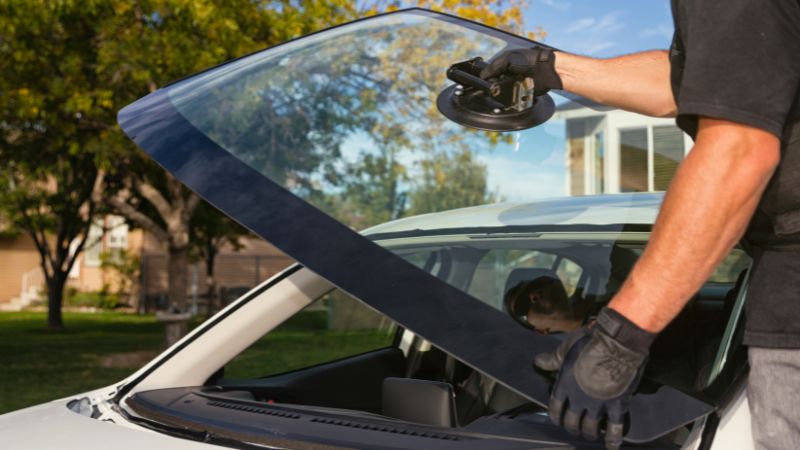
The first one we’ll look at is one of the most basic:
The windshield!
The windshield is the glass directly in front of the driver.
As the name suggests, this is here to protect the driver from the wind while driving.
Windshields are wide, and allow the driver to see everything that is in front of them.
Your windshield can either be clear or tinted.
Clear windshields let in the most light but don’t protect you from the sun. People can also see inside the car clearly when you don’t have tint.
Tinted windshields give you some privacy inside the car.
However, too much tint will make your view very dark. This can make it slightly difficult to drive during nighttime.
Windshield Wipers
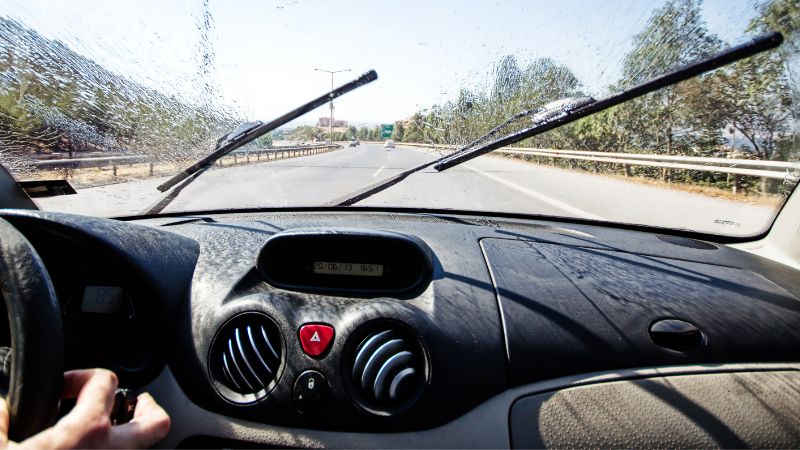
The wiper is found on the bottom of your windshield.
They play an important role in clearing your windshield to allow you to see through rain or snow
Wipers are operably through the wiper handle located opposite the headlight handle next to your steering wheel.
Most cars have two to three options, allowing you to cycle between the wiper speed according to the conditions.
The rubber on your wiper is degradable and has to be changed to ensure peak sweep performance.
Placing a lifespan is difficult, as this will depend on where you live, and the extent to which it has been used.
When it starts leaving water or snow on your windshield after wiping, it’s probably time to replace the rubber.
Lights
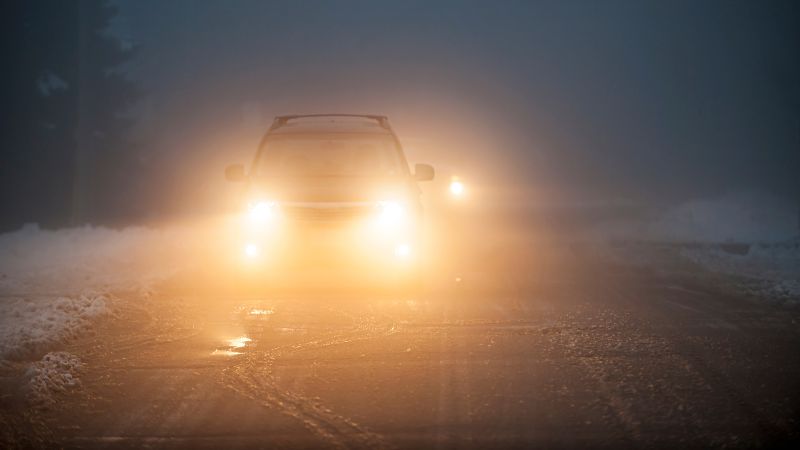
The lights on your car are one of the most noticeable exterior features. They allow you to drive when the road is dark.
But more than that, they also help others on the road to see you. In some cases, you can even use them to signal your intentions to other drivers.
The lights on your car are more specialized than what meets the eye, being designed to serve different purposes.
Headlights
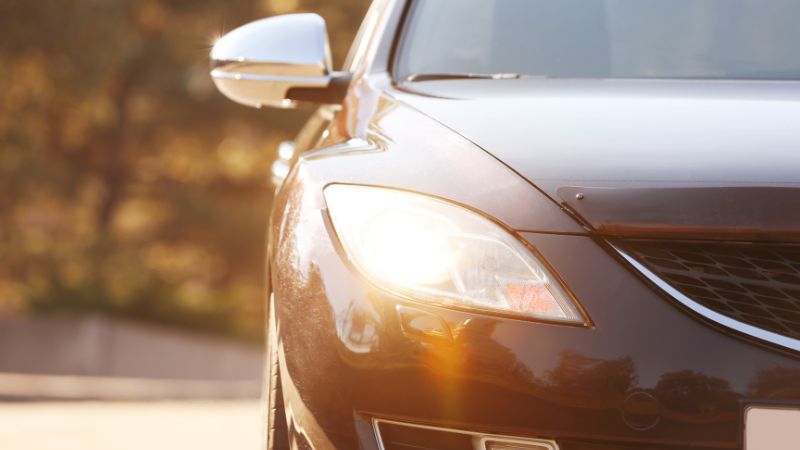
Headlights are located at the very front of the vehicle, often coming in very angular shapes and sizes.
These vary from car to car, but they all pretty much serve the same purpose of illuminating the road in front of you.
Here there are two separate lighting options, that all cars have,
Low-beam
First, the low beam is the normal lighting setting, that’s best suited for the city, where it’s pretty well-lit at night.
High-beam
The high-beam function dials the lighting up a notch, giving you significantly more visibility, which is best suited to dark roads, with minimal oncoming traffic.
High beams while useful can blind oncoming traffic, so it’s something that should only be used when required.
In some vehicles turning on the high beams involve pushing down your light switch, while other allow you to cycle through modes on the dial.
Day-time running
Many modern vehicles come equipped with LED headlights, known as daytime running lights.
This means that your headlights will always stay on, at a lower power consumption mode, even during the day.
In these vehicles you may also get automatic lighting, meaning your car senses when it’s night out, and turns the headlights on for you.
Brake lights/Backlights
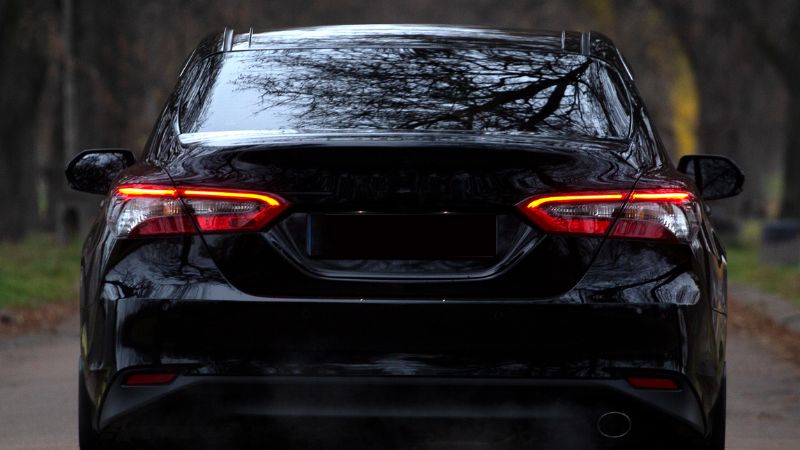
Brake lights are located on the rear of your vehicle and serve an important function:
Whenever you step on your brake, these lights turn on.
Brake lights don’t have an on and off switch. They light up whenever you press the brake to inform traffic behind you that you are slowing down or stopping.
That’s why a broken backlight/taillight can be pretty dangerous (and illegal!), making your vehicle difficult for other drivers to read.
Brake lights also have another use.
When you turn on your headlights, the brake lights turn on too! But they are quite dim.
They turn on so that your vehicle will be more visible during nighttime or in dark areas.
If you step on the brake, the dim lights will shine brighter, indicating that you’re slowing down or stopping.
Blinkers
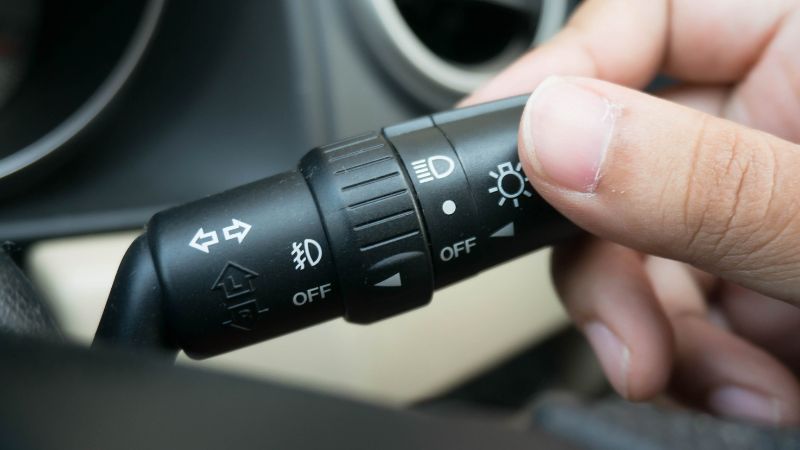
Blinkers may be the smallest lights of the bunch, but they are no less important.
Located on the front sides, rear sides, and even side mirrors, these serve as a useful tools for letting traffic behind you know where you are headed.
They are most useful when you’re making a turn, moving between lanes, or looking to overtake other cars on the road.
Here using your blinkers is essential to allow other drivers to predict your movements and possibly make way for you.
That’s why failure to use the blinkers when required can sometimes result in a fine of up to $150!
They come in different colors, with most older vehicles having an orange hue while modern vehicles come with LEDs, which tend to be white or orange.
Fog Lamps
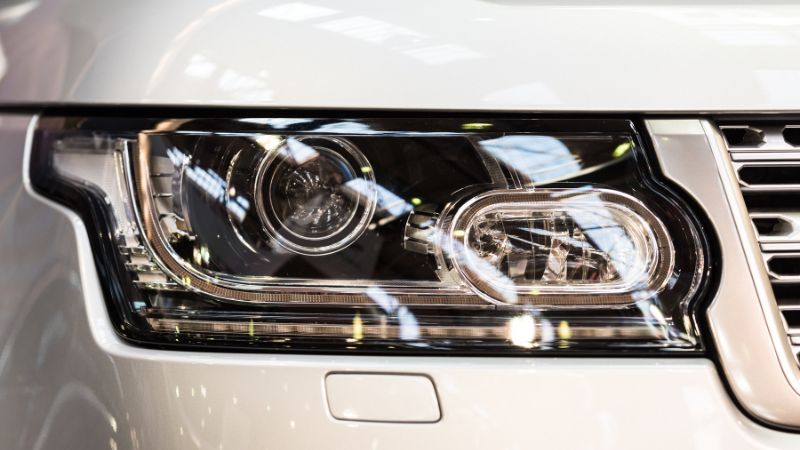
Fog lamps are a pretty misunderstood light, located on the front side of your car usually below the headlights.
These are often round and are markedly smaller compared to your main lights.
However, they specialize in tackling foggy and misty conditions, where visibility is less than 100 meters.
These are usually operable from your light switch, located next to the steering, with a distinct fog icon.
They are found on the front and back of your car, with the front lights usually coming in the color orange, which helps prevent glare in the fog.
Rear fog lights also serve the useful purpose, of letting traffic behind you know of your presence. This is important since spotting vehicles even a few meters ahead can become a challenge in heavy fog.

Tires
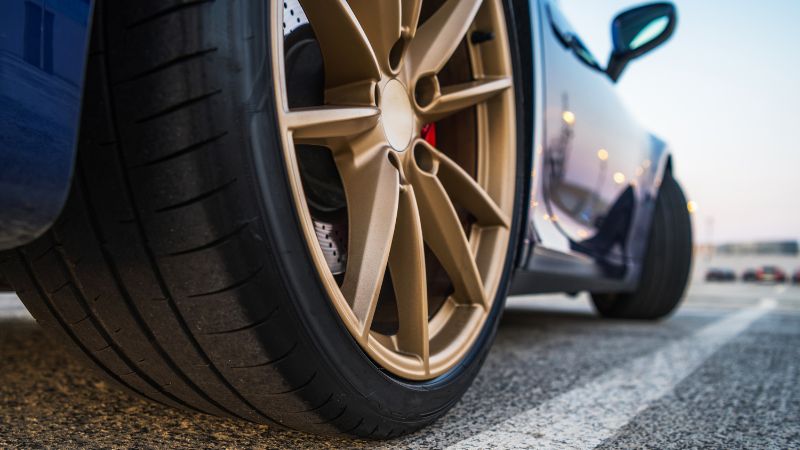
The tires are easily one of the most important parts of your vehicle.
For the most part, newer drivers don’t have to worry too much about what type of tires they have on their vehicles.
However, as you learn more about driving and cars, you’ll find that tires come in all shapes and sizes.
While on the surface they may all look similar, tires are often designed to perform in different conditions, and for different purposes.
Most tires are all-season, allowing you to drive comfortably in a variety of different weather conditions.
Others are more specialized, such as winter tires that’ll offer better grip in the snow.
Performance tires on the other hand maximize speed and handling above all else.
The choice you go with will depend a lot on your needs.
Side Mirrors
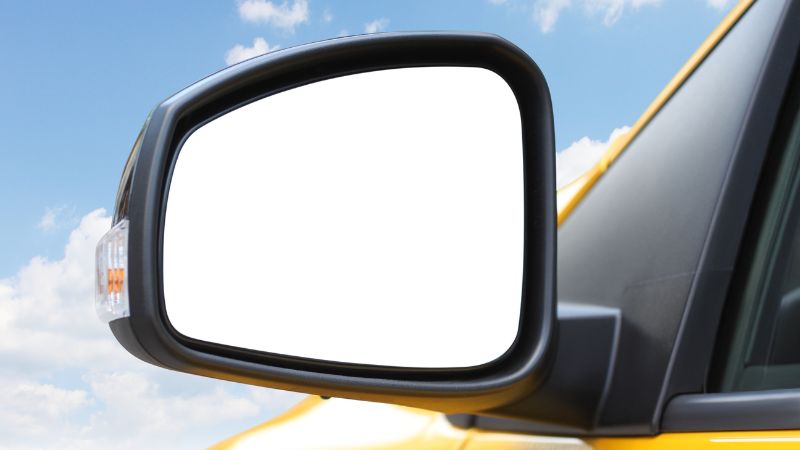
The side mirrors are essential to ensure safe driving, allowing you to see the cars on your rear and sides.
You can adjust these mirrors from inside your vehicle, usually with automatic buttons located next to the driver’s side seat.
Many are also retractable, allowing you to push them in through a button in the cabin.
Proper side mirror positioning is very important. We’ll get more in-depth into this in a future lesson but know that this is so important to prevent any large blind spots from catching you off-guard.
It’s best to take your time doing this, through a neutral seating position that’ll allow you to see through them without having to move your head around.
Many side mirrors incorporate blind spot sensors, that’ll alert you to any cars you can’t see when you’re looking to overtake.
Using these side mirrors alongside your indicators is a must whenever you’re looking to change lanes or make a turn.
Hood/Bonnet
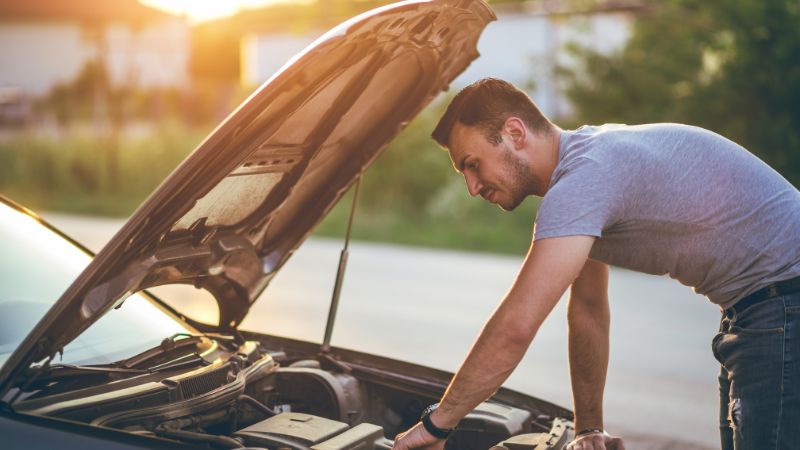
This is what greets you from the front of the vehicle, being what protects your engine and its component from the outside world.
You can open the hood from inside your car’s cabin, where most cars have a lever underneath the driver-side seat.
Opening up the hood will reveal the content on your engine bay, and allows you to inspect or clean the inside of your car.
A long rod is provided with most cars, that is attached underneath your hood, allowing you to firmly keep it in place while you inspect your engine.
Trunk
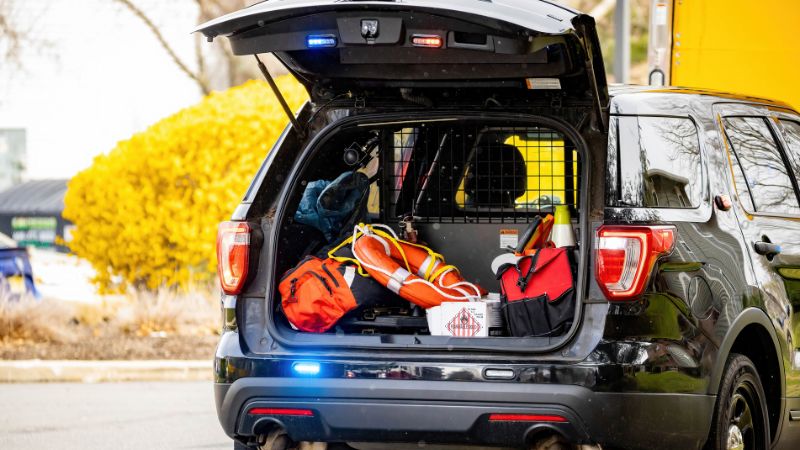
If you have a sedan, the trunk is another part that’s difficult to miss, taking up the whole rear of your car.
The main purpose of the trunk is to allow you to transport luggage with you and also often houses your spare tire underneath its padding.
These are usually operable through a lever right next to the driver’s side door.
However almost all cars with automatic mechanisms that allow you to open it with your key, or by just standing close by.
Certain sports cars, electric vehicles, and compact minicars may have the trunk located at the front, instead of the engine!
While for SUVs and other bigger vehicles, the trunk is usually replaced by a back door.
Exhaust (Tailpipe)
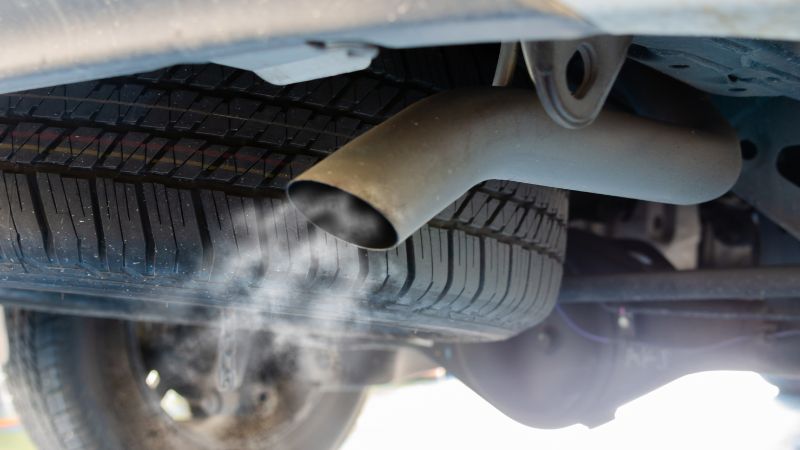
The exhaust is usually found on the bottom rear of your car. You’ll find an open pipe there, where smoke exits the car.
When your engine is running, it burns fuel and creates smoke.
Instead of leaving this smoke on the engine or under the hood, the exhaust takes it to the back of your vehicle and out.
That said, cars shouldn’t produce any noticeable smoke in normal conditions.
If you find black smoke coming from your exhaust, this is a sign of engine trouble.
Fuel cap
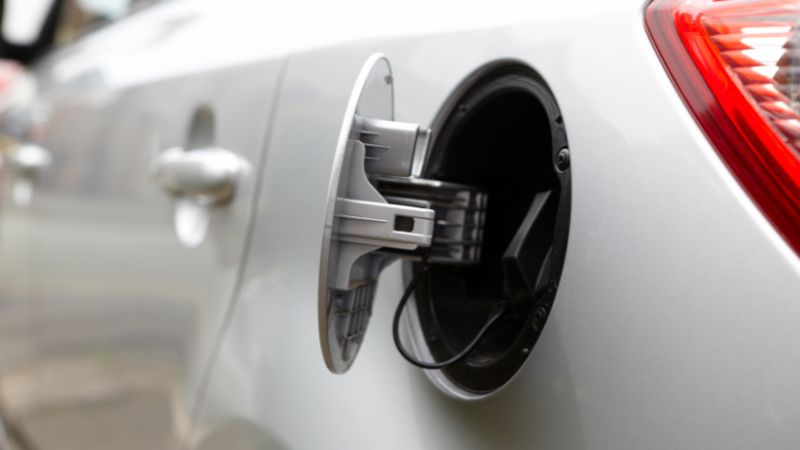
A fuel cap is what covers the hole you put gas into.
Its sole purpose is to prevent gas from getting in contact with the air or spilling out of your vehicle.
Properly fastening your fuel cap is essential to ensure your safety on the road.
If you ever notice any damage that prevents a proper seal, you should get it replaced immediately.
Conclusion
So there you have it,
A complete look at all your car’s outer gadgetry and features, helping you get a better sense of everything your car is made of.
A better understanding will help you focus more on driving safely, instead of fretting over how to use the features you have.
Additionally, you’ll also be in a better position to take better care of your car’s exterior, to protect yourself from any nasty repair bills.
Happy driving!
